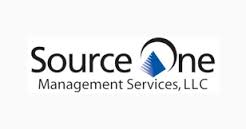
When it comes to retaining top talent, best-in-class companies are realizing the need for employee recognition. One of the most effective ways of reducing turnover and increasing engagement is simply recognizing employees and their contributions. Bersin by Deloitte research indicates that effective recognition lowers turnover rates by 31%. Additionally, recognition is considered an employee engagement driver, and according to Towers Watson, a 15% higher employee engagement rate correlates with 2% increase in operating margins.
While there are many methods and tools for recognition, there are simple steps companies can take to create a culture of recognition.
Say THANK YOU: The least expensive way to recognize employees is expressing your gratitude with a simple “Thank you.” It is also an easier and more frequent way of authentically recognizing colleagues compared to formal internal tools with automated responses. Research conducted by Gallup suggests that the number-one reason most Americans leave their jobs is that they don’t feel appreciated. Being consistently polite and expressing thanks creates a culture of appreciation that can be perpetuated throughout every level of an organization.
Reward Behaviors: Focus on behaviors you want to reinforce within your organization instead of focusing on titles and departments. Are there behaviors key to business results such as agility, creativity, or team work? Highlight those key behaviors when giving praise and recognition. Reward those behaviors with methods as complex as a formal award program or by simply providing positive feedback that calls out what action an employee took that displayed those behaviors. In doing so, you are rewarding behaviors critical to your company’s success and establishing incentives for other employees to exhibit those same behaviors. According to Globoforce, 79% of employees feel that recognition gives them a stronger sense of a company’s goals and objectives.
Understand Individual Needs: Just as everyone has their own unique work styles, each person is motivated by different forms of recognition. Knowing what type of recognition best motivates an employee can be critical for showing meaningful appreciation. For example, some employees may thrive on public accolade. Providing effective recognition for these colleagues may mean calling out their successes during team meetings and conference calls. Others may prefer private praise and acknowledgement, through personal exchanges (written or verbal) that are between the employee and the person providing the recognition. The best way of gaining this insight is to simply have a conversation to learn what forms of recognition will not only make the employee most comfortable, but also have the most impact.
Without a doubt, research is proving that recognition has a major impact on not only on employee happiness, but also on company productivity. Best-in-class companies are realizing this and taking measures to create a culture of recognition in the workplace. Taking these simple steps may be the secret to unlocking employee potential and achieving lasting results.
About the Author: Caroleann Boyle is the Marketing Content Strategist at Source One Management Services, responsible for driving Thought Leadership, content creation, and social media presence for the industry-leading procurement services provider. Her previous experience includes talent marketing and employee engagement for providers of business operations and customer relations software and solutions.
